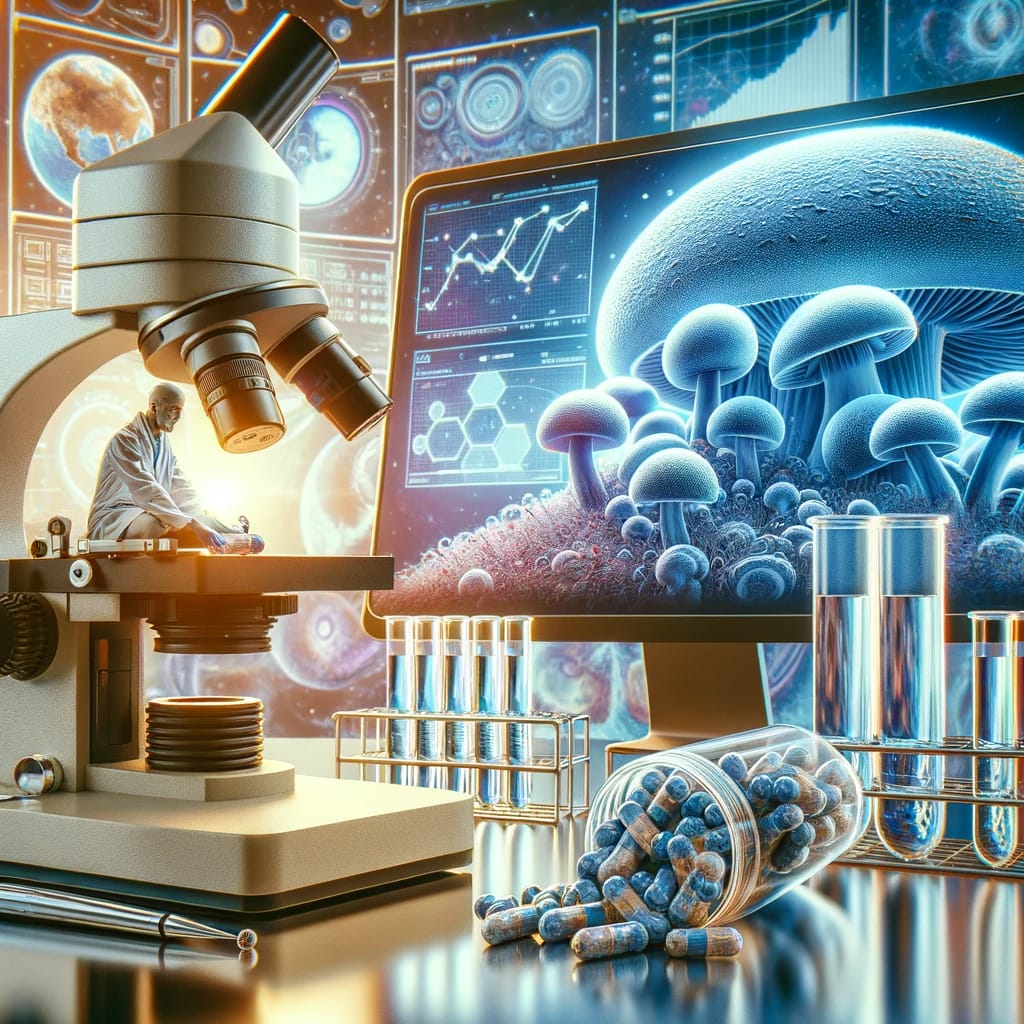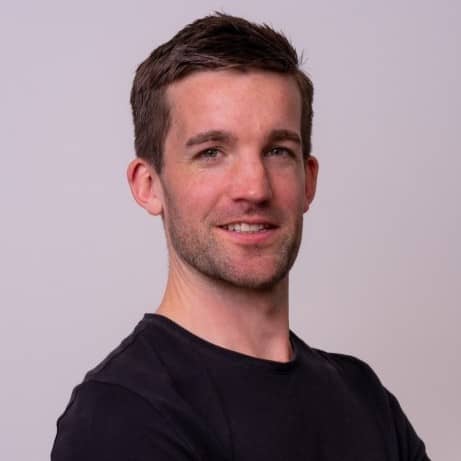In recent years, the field of mental health has witnessed a resurgence of interest in the therapeutic potential of psychedelic substances, a paradigm shift driven both by evolving scientific research and changing societal attitudes. Central to this renaissance is the practice of microdosing – the regular ingestion of minute, sub-perceptual amounts of psychedelic substances, such as psilocybin (found in certain mushrooms) and LSD. Unlike conventional psychedelic experiences, microdosing aims not to induce a full-blown psychedelic state but to subtly enhance cognitive and emotional functions.
This modern exploration of psychedelics for mental wellness is a significant departure from their historical use, which was largely confined to traditional, spiritual, and cultural contexts, predominantly among indigenous communities. Today, microdosing is gaining traction not just as a subject of scientific inquiry but also as a grassroots wellness trend, capturing the interest of those seeking alternative methods to improve mental health, enhance creativity, and foster overall well-being. This shift is reflective of a broader movement towards holistic and integrative approaches in mental health care, where individuals are actively seeking out non-traditional modalities to complement conventional treatments.
The study by Joseph M. Rootman, Pamela Kryskow, Kalin Harvey, Paul Stamets, Eesmyal Santos-Brault, Kim P. C. Kuypers, Vince Polito, Francoise Bourzat, and Walsh Z , from the University of British Columbia, represents an important step in understanding this phenomenon, offering a window into the motivations, practices, and self-reported effects of microdosing on mental health. By examining the experiences of individuals who microdose, the study illuminates how this practice is being integrated into the daily lives of a diverse range of people and highlights the potential of microdosing psychedelics to reduce anxiety and depression. In a world where mental health challenges are increasingly prevalent, understanding the role that microdosing could play in addressing these issues is not just of academic interest, but of real-world significance. As such, this introduction to microdosing serves as a prelude to a fascinating journey into a realm where ancient practices intersect with modern science, opening up new avenues for enhancing mental wellness in our contemporary society.
Microdosing Practices and Substance Choices
The research delves deep into the multifaceted world of microdosing, uncovering a tapestry of practices that vary widely among individuals. At the heart of these practices is psilocybin, which stands out as the predominant substance of choice for microdosing. This preference for psilocybin can be attributed to its perceived benefits on cognitive and emotional well-being, as well as its relatively accessible nature and historical usage. However, the study goes beyond mere substance choice, shedding light on the intricate strategies employed by microdosers.
A notable strategy is ‘stacking,’ a sophisticated method where psilocybin is combined with other substances, such as Lion’s Mane mushrooms and niacin. This combination is not random but is thoughtfully curated, with each component serving a specific purpose. Lion’s Mane, known for its neuroprotective properties, is believed to complement the neurogenesis effects of psilocybin, while niacin is added for its ability to enhance the distribution of the other components through its vasodilating effects. This stacking points to a nuanced understanding and intentionality among microdosers, aiming to maximize the benefits of their regimen.
The study also reveals that there is no one-size-fits-all approach to microdosing – dosages and frequency of intake vary significantly among individuals. This variance underscores the highly personalized nature of microdosing practices, reflecting the unique physiological and psychological make-up of each individual. Some participants opt for a regimented schedule, adhering to a strict routine in their microdosing, while others adopt a more intuitive approach, adjusting their dosage and frequency based on their day-to-day experiences and needs.
Furthermore, the choices in dosage and frequency are not just a matter of personal preference but are often influenced by a range of factors, including individual goals for microdosing, lifestyle considerations, and responses to the substances. This level of personalization in microdosing practices highlights the experimental nature of this self-directed approach to wellness, where individuals take an active role in tailoring their regimens to fit their specific mental health and well-being goals.
In summary, the study paints a vivid picture of the diversity and complexity in microdosing practices. From the choice of psilocybin as the primary substance to the nuanced strategies of stacking and the individualized approaches to dosage and frequency, it is evident that microdosing is a highly personalized and evolving practice, reflecting a broader trend towards customized and self-directed approaches in the pursuit of mental wellness.
Demographic Insights: Who are the Microdosers?

The study offers a revealing look into the demographics of individuals who engage in microdosing, presenting a diverse group that cuts across various ages, occupations, and backgrounds. This diversity challenges any preconceived notions of a typical microdoser, illustrating that the practice appeals to a broad spectrum of society. Individuals from different walks of life, each with their own unique set of experiences and motivations, are drawn to microdosing, suggesting its wide-reaching appeal.
Age-wise, the microdosing community spans a range from young adults to older individuals, indicating that the interest in microdosing is not confined to any specific age group. This age diversity reflects the various life stages and challenges that microdosing is employed to address, from the pressures faced by younger individuals in their academic and early career stages to the search for enhanced well-being and cognitive maintenance among older demographics.
In terms of occupation, the study finds that microdosers come from a range of professional backgrounds, debunking the stereotype that microdosing is primarily a practice of the tech or creative sectors. Participants include professionals in high-stress environments, educators, healthcare workers, artists, and even retirees. This occupational diversity highlights the universal appeal of microdosing as a tool for cognitive enhancement, stress relief, and personal growth, irrespective of professional affiliation.
The demographic analysis also reveals a balanced representation in terms of gender, with both men and women actively participating in microdosing practices. This gender balance is significant as it suggests an equitable interest and access to the benefits of microdosing for enhancing mental and emotional well-being.
Furthermore, the study sheds light on the educational background of microdosers, revealing a mix of individuals with varying levels of formal education. This indicates that the interest in microdosing transcends educational boundaries, appealing to both those with extensive academic backgrounds and those with more practical, experiential forms of learning.
The demographic insights from the study paint a picture of the microdosing community as a diverse and inclusive group. This diversity spans across age, occupation, gender, and educational background, reflecting the universal appeal of microdosing as a versatile tool for personal enhancement. It underscores the fact that microdosing resonates with a wide array of individuals, each seeking to improve their mental and emotional well-being through this self-directed practice.
Motivations Behind Microdosing
The study delves deeply into the motivations driving individuals towards microdosing, uncovering a complex tapestry of reasons that go beyond mere curiosity. These motivations are multifaceted, reflecting a range of personal, psychological, and health-related factors.
A significant motivation observed is the pursuit of enhanced mental clarity and cognitive improvement. Many participants turn to microdosing as a means to boost focus, creativity, and problem-solving capabilities, seeking an edge in their professional and personal lives. This cognitive enhancement is particularly valued in work environments that demand high levels of creativity and innovation, as well as in academic settings where concentration and comprehension are key.
Another prominent motivation is the desire for emotional balance and mental well-being. Individuals report using microdosing as a tool to alleviate symptoms of depression, anxiety, and stress. By microdosing, they aim to achieve a more balanced emotional state, enhancing their capacity to cope with daily stressors and improve overall quality of life. This pursuit of emotional stability often comes after traditional therapies or medications have provided limited or unsatisfactory results, positioning microdosing as an alternative or complementary approach to mental health care.
Further, the study uncovers motivations rooted in personal growth and self-exploration. Participants describe microdosing as a pathway to deeper self-awareness and personal development, facilitating introspection and a heightened sense of connectedness with others and the world around them. This quest for personal growth is often intertwined with spiritual exploration, where microdosing is seen as a catalyst for existential discovery and a deeper understanding of one’s place in the universe.
In addition to these psychological and personal motivations, some individuals are motivated by the potential physical health benefits associated with microdosing. This includes alleviating chronic pain, managing symptoms of certain neurological disorders, and enhancing overall physical well-being. While not as commonly cited as mental and emotional benefits, these physical health motivations are significant for those seeking alternative or holistic approaches to health care.
Lastly, a sense of community and shared experience often motivates individuals to engage in microdosing. Participating in online forums, local groups, and social networks, microdosers find support, share experiences, and gain insights from others who are exploring similar paths. This community aspect fosters a sense of belonging and collective learning, further enriching the microdosing experience.
In essence, the motivations behind microdosing are diverse and complex, encompassing cognitive enhancement, emotional well-being, personal growth, physical health, and community engagement. These motivations reflect the varied ways in which individuals seek to enrich their lives, manage health concerns, and explore the depths of their minds and emotions through the nuanced practice of microdosing.
Microdosing and Mental Health Outcomes
The study provides a comprehensive analysis of the effects of microdosing on mental health, revealing significant and multifarious outcomes. Participants report a spectrum of psychological benefits, highlighting the potential of microdosing psychedelics to reduce anxiety and depression.
A key finding is the reported alleviation of symptoms associated with mental health disorders, such as depression, anxiety, and PTSD. Many participants note a reduction in the severity and frequency of their symptoms, leading to an improved overall sense of well-being. This is particularly noteworthy in cases where traditional treatments have been ineffective or have resulted in undesirable side effects. Microdosing, in these instances, emerges as a viable alternative or complementary approach, offering relief where conventional methods have fallen short.
Moreover, the study shows that microdosing can lead to increased emotional stability and mood regulation. Individuals describe experiencing more consistent and balanced emotional states, with fewer mood swings and a reduced tendency towards negative emotional patterns. This enhanced emotional equilibrium contributes to better stress management and coping strategies, enabling individuals to navigate daily challenges more effectively.
Enhanced cognitive functioning is another significant outcome reported by participants. This includes improvements in concentration, memory, problem-solving skills, and creativity. These cognitive benefits are particularly valued by those in intellectually demanding professions or academic pursuits, where mental agility and innovation are crucial.
Additionally, the study finds that microdosing can foster personal growth and self-awareness. Participants report heightened introspection, leading to greater self-understanding and personal development. This introspective aspect is often accompanied by a sense of increased empathy and connectedness with others, contributing to improved interpersonal relationships and social interactions.
Some participants also report experiencing a greater sense of spiritual well-being and a deeper connection with the world around them. This spiritual dimension of microdosing is seen as enriching one’s life experience, offering new perspectives and a heightened appreciation for life’s complexities.
It is important to note that while many report positive outcomes, the study also acknowledges the variability in individual experiences and the need for further research. The subjective nature of microdosing and its effects necessitates a cautious and personalized approach, considering the unique psychological makeup and health status of each individual.
In summary, the study underscores the potential of microdosing as a significant contributor to mental health enhancement. With its reported effects on mood stabilization, cognitive improvement, personal growth, and spiritual well-being, microdosing presents itself as a multifaceted tool for mental health management, warranting further exploration and scientific inquiry in the field of mental welln
The study’s conclusion emphasizes the emerging role of microdosing as a potential wellness practice, drawing attention to its multifaceted implications in the realm of mental health and personal development. The findings suggest that microdosing, particularly with substances like psilocybin, could be more than a mere trend; it may represent a paradigm shift in how individuals approach mental wellness and cognitive enhancement.
Microdosing psychedelics reduces anxiety and depression
Central to the study’s conclusion is the recognition of microdosing as a personalized wellness practice. Unlike conventional treatments, microdosing allows individuals to tailor their approach, adjusting dosages and schedules to suit their unique physiological and psychological needs. This customization is crucial, considering the diverse experiences and responses to microdosing reported in the study. It reflects a growing movement towards individualized health care, where treatments are adapted to the specific context and needs of each person.
The study also highlights the potential of microdosing to complement traditional mental health treatments. For many, microdosing has filled gaps left by conventional therapies, providing relief from symptoms of mental health disorders where other treatments have been ineffective or have caused adverse side effects. This suggests a need for a more integrative approach to mental health care, one that combines traditional methods with alternative practices like microdosing to achieve optimal outcomes.
Moreover, the study points to the broader implications of microdosing for enhancing overall quality of life. Beyond its impact on specific mental health conditions, microdosing is reported to improve emotional stability, cognitive function, and creativity. These benefits can translate into improved productivity, better relationship management, and enhanced personal fulfillment, contributing to a more balanced and satisfying life experience.
The conclusion also addresses the need for caution and further research. While the study reveals promising aspects of microdosing, it also acknowledges the limitations of current knowledge and the need for a deeper understanding of its long-term effects and potential risks. The study advocates for more rigorous scientific research to validate these findings and to develop safe, effective guidelines for microdosing practices.
In essence, the study’s conclusion posits microdosing as a potentially transformative wellness practice. It offers a novel approach to mental health management and personal growth, tailored to the individual and capable of addressing a range of psychological and cognitive needs. As such, microdosing emerges not just as a tool for symptom management, but as a holistic practice contributing to a more nuanced and comprehensive understanding of mental wellness.
References
1. Carod-Artal FJ. Hallucinogenic drugs in pre-Columbian Mesoamerican cultures. Neurologia. 2015 doi: 10.1016/j.nrleng.2011.07.010. [PubMed] [CrossRef] [Google Scholar]
2. Sessa B. The Psychedelic Renaissance: Reassessing the Role of Psychedelic Drugs in 21st Century Psychiatry and Society. Muswell Hill Press; 2012. [Google Scholar]
3. Anderson T, et al. Microdosing psychedelics: Personality, mental health, and creativity differences in microdosers. Psychopharmacology. 2019 doi: 10.1007/s00213-018-5106-2. [PubMed] [CrossRef] [Google Scholar]
4. Nye, B. C. Microdosing: The people taking LSD with their breakfast. BBC News. BBC News (2017) https://www.bbc.com/news/health-39516345.
5. Williams A. How LSD Saved One Woman’s Marriage. New York Times; 2017. [Google Scholar]
6. Ona G, Bouso JC. Potential safety, benefits, and influence of the placebo effect in microdosing psychedelic drugs: A systematic review. Neurosci. Biobehav. Rev. 2020 doi: 10.1016/j.neubiorev.2020.09.035. [PubMed] [CrossRef] [Google Scholar]
7. Bourzat F, Hunter K. Consciousness Medicine. Indigenous Wisdom, Entheogens, and Expanded States of Consciousness for Healing and Growth. North Atlantic Books; 2019. [Google Scholar]


Leave a Reply